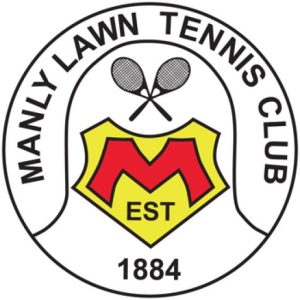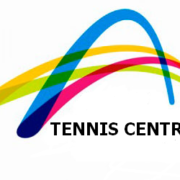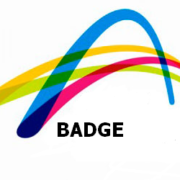MTC Ladies Competition Term 1
/in Tennis Centre /by manly_adminMTC Ladies Competition
Entries for Term 1 Close 27 January.
Enrolments are now open online for Friday’s Term 1 comp.
Ladies Competition starts Friday 3 February.
Reserve players always welcome. For more information, please contact or email Scott.
Sign up on the web links above.
Scott Blackburn
MTC Tennis Director & Head Pro
MTC Night Competitions Term 1
/in Tennis Centre /by manly_adminMTC Night Competitions
Entries for Term 1 Close 27 January.
Enrolments are now open online for Term 1 comps.
Night Competitions start:
- Tuesday night 31 January
- Wednesday night 1 February
Reserve players always welcome. For more information, please contact or email Scott.
Sign up on the web links above.
Scott Blackburn
MTC Tennis Director & Head Pro
Seven Basics of Tennis Strategy | ATP
/in Ask the Pro, Whisperer /by manly_adminCraig O’Shannessy is a well known tennis statistician. He recently republished the stats below in the context of the Australian Open.
Our Tennis Whisperer attempts to explain the WHYs underlining Craig’s stats in simple terms of the three primary skills underpinning every tennis stroke: ball watching, balance and rhythm . [See WHY comments in these brackets].
These are the seven basics of tennis strategy and, as always, they will be the key to winning at this year’s Australian Open.
Lesson 1: Forehands and Backhands
Nine-time Australian Open champion Novak Djokovic has arguably the best backhand in the world. But who cares.
When Djokovic last won the “Happy Slam” in 2021, he struck 98 forehand winners and 45 backhand winners. That’s why you see players running around backhands to hit forehands. They desperately seek to upgrade.
The forehand is the sword. The backhand is the shield. The sword accounts for about two out of every three winners from the back of the court.
Forehand and backhand winners
| M/W | Forehand winners | Backhand winners |
| Men | 70 per cent (3228) | 30 per cent (1386) |
| Women | 64 per cent (2236) | 36 per cent (1247) |
[Whisperer: The NADAL VARIATION creates more extreme angles because of the racket position in relation to body.]
Lesson 2: Tennis is a game of errors
The Australian Open features the best players on the planet, who rally back and forth ad nauseam on the practice court with precious few mistakes. Then matches start, and errors flow.
Winners and errors
| M/W | Winners | Errors |
| Men | 34 per cent | 66 per cent |
| Women | 30 per cent | 70 per cent |
Winners are rising at Melbourne Park, jumping from 30 per cent for the men in 2015 to 34 per cent last year. In the women’s game, there was a jump from 27 per cent in 2015 to 30 per cent in 2022.
Because errors are so prevalent, it’s much smarter to make opponents uncomfortable and force mistakes than chase winners. Obsess over the bigger pool of points.
[Whisperer: Minimizing errors by staying in the point has always consistently won more points. ]
Lesson 3: Eight ways to force an error
There are actually eight ways to make the opponent uncomfortable and extract an error.
[Whisperer: WHY explained in Where column of the three primary skills in any stroke: ball watching, balance, rhythm—strength is NOT necessarily the key.]
Eight ways to force an error
| # | 8 ways | Where |
| 1 | Consistency | Court: Watching |
| 2 | Direction | Court: Balance |
| 3 | Depth | Court: Balance |
| 4 | Height | Court: Balance |
| 5 | Spin | Ball: Watching |
| 6 | Power | Ball: Rhythm |
| 7 | Court Position | Me: Balance |
| 8 | Time | The clock: Rhythm |
These eight elements are the holy grail of tennis. If a player hits a shot that contains just one of these eight, such as depth, they will have gained the upper hand in the point.
If their shot includes two or more qualities, such as power and direction, they will be standing inside the baseline hitting with authority when the weak ball comes back.
If they combine three elements – such as height, spin and court position – the ball doesn’t come back.
Lesson 4: Rally length
Winning the short rallies is the best way to walk off court with a victory. The study of rally length started at the 2015 Australian Open and shook the foundations of the sport because of just how many short rallies occur.
Rally length
| Shots | Men | Women |
| 0-4 | 70 per cent | 66 per cent |
| 5-8 | 20 per cent | 23 per cent |
| 9+ | 10 per cent | 11 per cent |
[Whisperer: Impact of powerful racket technology and advantage to server. Corollary: get into the point as much as possible. Use typical Djokovic/Medvedev strategy of deep returns to put server off balance to nullify server advantage.]
Rally length is predicated on the ball landing in the court, not hitting the strings. So a double fault has a rally length of zero as the ball didn’t land in, and a missed return is a rally length of one as the serve went in and the return was missed.
Seven points out of 10 are contested by players hitting the ball a maximum of two times each (four-shot rallies) in the court.
The data also blew the doors off the myth that winning long rallies equated to winning matches. There are, typically, not enough long rallies to make a difference.
Lesson 5: Mode
The mode simply means the most common value in a data set. We can predict with certainty that the most abundant rally length at this year’s Australian Open will be the same as last year, and the year before that. One shot in the court. No more. No less.
Ask someone which rally length is the most frequent, and the typical answers are from four to eight shots. You can tell them that Novak Djokovic and Andy Murray thought they played more four-shot rallies than anything else. They were very surprised, like all players, that they play more one-shot rallies than any other. That equates to a made serve and a missed return.
2015 Australian Open men: Most common rally lengths
| Rally length | Percentage |
| 1 shot | 30 |
| 3 shots | 15 |
| 2 shots | 10 |
| 5 shots | 9 |
| 4 shots | 8 |
As you can see from the table above, one-shot rallies are incredibly frequent in a match (30 per cent). The next closest rally length is three shots at 15 per cent.
Notice that three-shot rallies occur more than two shots, and five-shot rallies occur more than four shots. That’s because of the halo effect of the serve, or how long the influence of the serve lasts before things become even in a rally.
[To repeat. Whisperer: Impact of powerful racket technology and advantage to server. Corollary: get into the point as much as possible. Use Djokovic /Medvedev strategy of deep returns to nullify server advantage.]
Lesson 6: You win a higher percentage at the net than the baseline
The baseline seems like a safe haven for players, while the net seems a risky place to win points. Nothing could be further from the truth.
The baseline as a safe haven?
| M/W | Baseline win percentage | Net win percentage |
| Men | 47 | 67 |
| Women | 48 | 66 |
If you rally from the back of the court, you are lucky to win half of your baseline points.
[WHISPERER: Volleys are an ESSENTIAL stroke for any serious tennis player, and particular for junior development, not an afterthought. Moving forward to the net (from GHOSTLINE) wins about two out of three points.]
The net has always been a fun, prosperous place to win points and nothing has changed statistically to think otherwise.
Lesson 7: Serve and Volley works
No tennis strategy has been more maligned and misunderstood than the serve and volley. Pundits say it belongs to another era and is too difficult to employ in today’s game. It’s simply not so.
Serve and volley works
| M/W | Played/won | Percentage won |
| Men | 709/1053 | 67 |
| Women | 36/57 | 63 |
Both men and women won about two out of three points serving and volleying at last year’s Australian Open.
That is a far superior tactic than serving, staying back and trying to eke out a living from the baseline to hold serve.
[WHISPERER: Enhances probability of winning the point because of the geometry and physics of relative court positions of each player]
Source: Craig O’Shannessy, SMH
MLTC Newsletter – 15 Jan 2023
/in Club News /by manly_adminFriday Night Doubles
- Friday 27th Jan – Mixed Doubles
- Friday 24th Feb – Ladies Doubles
- Friday 31st Mar – Men’s Doubles
- Thu 26th Jan – Australia Day Public Holiday – 3 members courts from 7am to 6pm with social on all 3 courts from 12pm to 3pm.
- Fri 27th Jan – Mixed Doubles Friday night comp 6.30pm to 8.30pm
- Sun 12th Feb – Age Club Champs and Badge entries CLOSE
- Sat 18th Feb – 40+ men’s and women’s singles and 60+ men’s singles
- Sun 19th Feb – Combined 100 men’s and women’s doubles
- Fri 24th Feb – Ladies Doubles Friday night comp 6.30pm to 8.30pm
- Sat 25th Feb – 40+ and 60+ men’s and women’s doubles
- Sun 26th Feb – Combined 100 mixed doubles
- Fri 3rd Mar – Trivia Night – more details to come. Get your teams ready!
- Fri 31st Mar – Men’s Doubles Friday night comp 6.30pm to 8.30pm
- Fri 7th to Mon 10th Apr – Easter weekend
- Tue 25th Apr – Anzac Day
- Thu 27th Apr – Thu Badge starts
- Sat 29th Apr – Sat Badge starts
Best wishes,
Virginia
MLTC Secretary
www.manlylawn.com.au
Being a Ballkid in Melbourne | SMH
/in Club News, Goss /by manly_adminIt takes a special combination of attributes to join the legends on court, writes Carla Jaeger. They have quiet feet. They know their roles and their moves. They know when to offer a towel and when to stay out of the way of a player who’s about to explode. And they do this without showing emotion or attracting attention.
The Australian Open ballkids will march onto the courts at Melbourne Park tomorrow and face the sweltering January heat, whacks from 200km/h fuzzy yellow balls, and the demands of the world’s best tennis players.
The 394 ballkids chosen for this year’s summer of tennis have been perfecting their skills through months of training. They’re there to make the game as efficient as possible; retrieving stray tennis balls, providing balls for serves, servicing the players with new or restrung racquets, towels or drinks, mopping up the players’ sweat to avoid slip hazards, and removing interloping insects and moths. All this they must do while remaining silent and trying not to attract attention.
But, try as they might to avoid it, there are moments when they just can’t help but capture the spotlight. Global audiences laughed when Moroccan qualifier Elliot Benchetrit asked a ballkid to peel his banana at the 2020 Australian Open (the chair umpire told him to do it himself); fawned when Rafael Nadal kissed the cheek of a ballkid he accidentally whacked in the face the following year; and scowled when Russian star Daniil Medvedev unleashed a tirade about the ballkids for failing to deliver the balls in the manner he wanted during last year’s men’s final (the umpire told Medvedev the ballkids were doing their jobs exactly as they’d been taught).
Eager to learn more about the faces under the Legionnaire hats, The Sun-Herald joined a training session with 16 of this year’s ballkids. The kids at Melbourne Park’s Kia Arena are among the hundreds selected for the tournament, narrowed down from more than 1000 applicants chosen through a process that begins a year in advance. The youngsters for this year’s Open range in age from 12 to 15. Some are entering their third or fourth year as a ballkid; others are making their debuts on the blue courts. Chaperone and ballkid supervisor Eliza Flower, who runs training sessions, said those chosen needed to have good athletic skills and attention to detail. It’s not compulsory to play tennis – though it certainly helps, as the kids need to understand how the scoring of the game works. ‘‘ The really good ballkids have quiet feet when they run, and they don’t interrupt play,’’ Flower said.
Once selected, the preparation begins with five training sessions in which the basics of the job are taught – how to communicate (ballkidding has its own language, but more of that later), how to roll the ball, how to anticipate where the ball needs to be, and how to service the players.
Oncourt skills are mastered at tournaments in November and December so the ballkids are prepped for January’s Open. From the day the tournament starts, the ballkids are on site at Melbourne Park and ready for action, spending eight hours each day at the venue, half of those on court – one hour on, one hour off.
The rotations on the court decrease to 45-minute intervals if the weather reaches a certain temperature. Other methods, such as wearing padded neckties soaked in cold water, are also used to cope with the heat. If the kids work late, they start late the next day, or are given days off. They are grouped into teams of six, known as ‘‘ squads’’ . These squads are assigned a court in the morning and will work together as a team for that day. When they’re not on the court, the kids are ‘‘ backstage’ ’ in designated lounges, where fruit, water and Powerade are available. ‘‘ The lounges are really good. They provide lots of games, and you get to roll the ball everywhere,’’ ballkid Molly Rizun, 14, said. It’s fun and games backstage.
But while on court the kids are hard at work, with their performance constantly assessed by a supervisor who gives individual and squad feedback after each match. ‘‘ It’s weirdly old-school ,’’ Flower said. ‘‘ They have pretty hard feedback and pretty much there’s always something they can improve on.” The kids want that kind of discipline, too. They come off court and ask Flower what they can do better. Flower often finds herself nitpicking over small things like tucking their thumbs when they communicate how many balls they have. One of the harder rules ballkids have to follow is not talking to the players or showing any emotion – which can sometimes get hairy. ‘‘ When some players get a bit angry at themselves – or us – and they yell at you, you just have to stand there with a straight face,’’ ballkid Esther Pound, 15, said. ‘‘ Sometimes it’s a bit hard. Sometimes you want to laugh, or cry, but you just have to stand there.’’ The kids are used to it, with many having copped a spray from at least one player during their time. One ballgirl, already media savvy, chose not to disclose which player screamed at her. ‘‘ I don’t want to get sued,’’ she said. Jaidyn McNeil, 13, was willing to take that risk, dishing the details of his experience with Nick Kyrgios during the men’s doubles semi-final at last year’s Open. ‘‘ He was getting really frustrated as he was losing the first set, and he nearly hit me with a ball,’’ he said. ‘‘ It was really funny, but I was also trying to keep a straight face because we’re not really allowed to kind of smile.’’ After they’re assessed, the kids are given an overall rank.
The better the ranking, the better the arena they’ll be assigned for their next match. The best kids are assigned to the finals , a badge of honour among the youngsters, and something that is announced at a ballkid party the night before the match. Some might consider the extensive training a bit over the top. But other tournaments’ problems show just how important good ballkids are to the game.
At the 2015 Shanghai Masters, players were left frustrated after game play was impeded by inexperienced ballkids who delivered unwanted balls to players, were unsure where to stand, and couldn’t get the balls to the other side of the court. The ballkids are not paid, but they are given a prize pack at the end of the Australian Open, which in the past has included GoPro cameras, speakers and iPods. That’s not why they sign up to take on the role, anyway. The group we spoke to most commonly said making new friends and meeting the players are the main drawcards of the experience. Though a new pair of headphones certainly doesn’t hurt.
There are six ballkids at every court. Four of the kids are positioned at each corner of the court, while the other two are at the net, on either side of the chair umpire. Kids are assigned a position on the court based on height: the shorter kids go to the nets, the taller kids go to the base. It’s the job of the base kids to provide the players with balls for serves, which makes the base positions the more desired spot among the kids. They work together to grab balls that fall within their designated sections of the court, communicate where the balls are, and make sure their balls are at the right part of the court, ready to give to the player who is serving.
Now, to decode the language of ballkidding . . . At any given time of a match, there are six balls on court. The kids need to know at all times where these balls are. Ballkid Finn McCreadie, 14, said communication was one of the most important skills. ‘‘ Are they at the base? Are they at the net? So that way you know where to roll [the ball] to, and give it to the players as fast as you can.’’ The kids use signals to communicate with each other and the players to show how many balls they have at any given point of the match. Aside from verbal communication – which they are only allowed to do with the chair umpire and each other – there are signals to show who has each ball. Servicing is the technique used to provide the players with balls for serves.
But servicing doesn’t just involve balls. Players can request anything from a new racquet to a drink of water, to the more bizarre requests – like when Kyrgios asked ballkid Thomas Rossi to get rid of a seagull. ‘‘ The seagull was annoying him, so he asked me to kick it off. I just ran at it, scared it away, and then he just continued playing like nothing happened,’’ Thomas, 15, said. Getting balls around the court is done by rolling them to the kids. The key is to be efficient , fast and not impede play.
Sometimes players will request things that ballkids are taught not to do. One French player, for example, only takes balls from one side of the base – even though the kids are taught to never roll a ball from one base to another. They’ll usually do it anyway. Because, at the end of the day, the ballkid is there to tend to the player’s needs. Receiving refers to the way the kids collect the balls being rolled to them by one of their fellow squad members. Concentration must be high as their teammates roll balls to them, one by one. Rolling balls need to be fast and not impede the play. Balls are distributed so the ballkids at the baseline can service players with balls for serving. When receiving at the net, ballkids will start either kneeling (when opposite the chair umpire) or standing (when beside the chair umpire). Ballkids need to pre-empt the movement of the ball before the end of the point based on two possible outcomes: player A wins the point, or player B wins the point. Tiebreakers are tough work, and much of the training is spent preparing for them: Ballkids must pay close attention to the game play because the scoring is different, and the ball changes courtside quickly. ‘‘ If they don’t know where the ball is, the players are kept waiting for the ball, and they get impatient,’’ Flower said. So, now you know how it works.
Could you be a ballkid? For even the most casual tennis fans, being a ballkid looks like a glamorous job. You get to meet your heroes and watch history-making matches unfold. But the reality can be tougher and some people are not up to the task. ‘‘ The best ballkids are the ones that know what the player wants,’’ Flower said. Sometimes, knowing what the player wants means doing particularly unglamorous things; like squashing moths, shooing birds who stubbornly perch themselves on the net, or even pushing through the pain of the grazed knees commonly endured when drying the courts after rain. Ballkid Lucy Higgins, 14, said that while these were the strangest bits of the job, they’re also the most memorable. ‘‘ You have to keep running across the court and squashing them [moths] and it’s , like, 1am,’’ Higgins said. ‘‘ It’s definitely not something we practise doing in the ball-kid sessions, so it comes as a surprise to many people.’’
As the kids show us, and the supervisors tell us, being a ballkid requires initiative and concentration, as well as agility and speed. It’s about knowing when to take over a sweat towel – with time to roll a ball to a squad member – while keeping track of the entire match’s play. All within a 20-second interval between points.
If you’re forgetful or have a poor attitude, the job is not for you. Kids who come to court unprepared, without their hats or water bottles, are taken off court and reassigned when another spot appears on the roster. This is known as being TBA (to be assigned) – a title considered undesirable among the kids. Then, on top of it all, you have to be willing to risk embarrassing yourself on the world stage. It’s a common fear among the kids to appear on ballkid error compilation videos, a genre popularised on YouTube that can garner millions of views, featuring kids running into walls, fainting and falling over. Perhaps most unfortunate of all would be to have a tennis player talk about your bladder control in a press conference, as American player Donald Young did in 2010, after a match stopped for 40 minutes when a ball boy wet his pants. But it’s all worth it if you can handle the heat, literally and figuratively .
Source: SMH
Moneyball Comes to Tennis
/in Ask the Pro, Goss /by manly_adminTennis is on the verge of a belated Moneyball revolution. In the northern spring, the Association of Tennis Professionals, which runs the men’s tour, is planning to open up ball-tracking data from every match to all its players and coaches.
The shift will do much to level an uneven playing field. Until now, millionaire players such as the “Big Four” men have had the opportunity to buy better-quality data analysis than their less wealthy rivals.
One might imagine that access to data would be a basic right for all leading professionals. In fact, anyone wanting to use the information gathered by Hawk-Eye, the leading ball-tracking provider since 2014, has had to pay a £150 ($263) processing fee per match. On top of that, tour rules say you can order data only from matches you played in.
In April, this will change. “We want to give players more equal access to this information,” says Ross Hutchins, the Association of Tennis Professionals’ chief tour officer. “We believe it will improve performance levels. We are looking to bring player and ball-tracking online from every ATP tournament. We’re hoping to make this happen by the second quarter of 2023, and then bring in wearable technology, such as heart monitors and GPS location devices, by the second half of the year.”
Despite the relatively large amount of money at stake, tennis must rank as one of the most backward major sports when it comes to sophisticated data analysis, mainly because there are few economies of scale.
Six-figure sums for data
If you are lucky enough to come from a grand-slam nation such as Great Britain or the United States, you can usually dip into your federation’s sizeable dataset. Otherwise, the only way to gain access to more than a tiny percentage of matches is to hire one of the big analytical companies, such as Golden Set Analytics (GSA), which used to charge Roger Federer a six-figure sum annually for exclusive access to its scouting and performance reports.
“In tennis, the teams are smaller than most other sports, and almost everything has to come out of the player’s pocket,” says Philip Mauerhofer, who runs a well-regarded analytics firm called Tennis Stat. “Unless you’re at the top of the game, adding more expenditure to your coaching and your physio and your fitness training is always going to be a stretch. So to have a trove of data available on every player would be a game-changer.”
Agent Patricio Apey welcomed the ATP plan. One of Apey’s clients – America’s Sebastian Korda – has been able to benefit from his close relationship with the United States Tennis Association, which logs all the information from its home tournaments and has a data-pooling deal with Tennis Australia.
But another of Apey’s stable – Greece’s Stefanos Tsitsipas – has had no such support. Tsitsipas thus needs to spend considerably more to gain the same level of tactical insight. As a top-five player, he can probably afford the difference. Those lower down the ladder are not always so fortunate.
“I’m cautiously hopeful that the governing bodies will see that making this information available to all players and their teams will only make the sport better,” Apey says. “Look at how sophisticated Formula One is when it comes to using data. Maybe in the future we will see cutting-edge analysts in the player boxes doing their work in real time and passing useful feedback to coaches and players during matches.”
Test run for courtside coaching
Tennis has many governing bodies, and at the moment only the Association of Tennis Professionals – as opposed to the grand slams and the Women’s Tennis Association – is committed to opening up its dataset. But the scenario Apey mentions is already here, even if it was used only on an experimental level at last November’s ATP Next Gen Finals in Milan, where coaches were allowed to advise their players during matches, as is becoming the norm on the ATP Tour, and at the two hard-court slams. They were also given an electronic tablet showing live data from the match as it progressed.
“It was challenging to use at first,” says James Trotman, the British coach whose player, Jack Draper, was eliminated in the semi-finals of that event. “There was so much data, whether it be the direction of the serve, the accuracy of the return, or the speed of each player’s forehands and backhands.
“I had to keep it simple, so I just focused on the first of those categories. There was one opponent who was always serving in the same place, so when it came to the tie-break I was able to tell Jack to sit on that return, which helped a great deal.”
Four years ago, Germany’s No. 1 Alexander Zverev said that “all the big guys are using data analysis, they just don’t like to talk about it” – and leading players are still coy about their data support. A rare exception is the world’s best player, Novak Djokovic, who allowed his former analyst, Craig O’Shannessy, to speak publicly about their work together.
The bigger your database, the easier it is to supply reliable scouting reports on every opponent. GSA says it has an automated algorithm that “scrapes” data directly from TV coverage, but for the smaller operators, many thousands of hours have been spent on hand-tagging matches. The going rate for a one-off scouting report from these lesser outfits is $US300.
So what kinds of insight can a big company provide? “A lot of added value is obtained from using data richer than anything the human eye can detect,” says Ben Depoorter, GSA’s vice-president of player analytics. “Hawk-Eye’s ball-tracking system generates millions of data points. And the insights that show up are not always what you might expect.
“Contrary to most expectations, Djokovic is outstanding with his backhand on fast returns hit towards his feet, and weaker on loopy balls that land short but with more of an angle, because he likes to hit on the rise. People come in with set ideas about what works – and the only way to disprove their preconceptions is with data.”
Source: The Telegraph, London
Annual Senior Club Championships. Entries Close Feb 12
/in Club Championships, Club News /by manly_adminEntries are now open for the Senior Club Championships in February. Dates are as below
These are the dates and events:
Saturday February 18 Noon. Womens 40+ Singles Mens 40+ Singles Mens 60+ Singles
Sunday February 19 9AM. Womens Combined 100 Doubles Mens Combined 100 Doubles ( Hilton Mace Trophy)
Saturday February 25 Noon. Womens 40+ Doubles Mens 40+ Doubles Womens 60+ Doubles Mens 60+ Doubles.
Sunday February 26 9AM. Combined 100 Mixed Doubles.
ALL EVENTS ARE ROUND ROBIN FORMAT. Minimum of four (4) entries needed for event to be held.
ALL EVENTS WILL COMMENCE AT NOON ON SATURDAYS AND 900AM ON SUNDAYS.
Enter below.
Denis Crowley
MLTC Club Captain
6 Gadgets Which Improve Your Tennis (Maybe??)
/in Ask the Pro, Goss /by manly_adminIf you want to get better at tennis and improve your fitness, these gadgets maybe a starting point?
Tennis is a very physical sport. For example, the tennis serve represents a complex movement that requires muscles throughout the entire body to rotate in unison to deliver accuracy and power.
Whether you’re new to the game or a seasoned veteran looking to get just a little bit better, there are a handful of tech gadgets you should check out.
These gadgets can track and analyze your swing, keep track of the score, and measure the speed of your serves, among other things.
1. Sony Smart Tennis Sensor
2. Zepp Tennis Swing Analyzer
3. Babolat Pop Tennis Wristband
4. Ball Coach Pocket Radar
5. Hit Zone Air Suspension Tee
6. Scoreband Play Wristband
Don’t overthink each point | AskThePro
/in Ask the Pro, News /by manly_adminI know this sounds pretty crazy, but you should not be trying to think while you are playing a point.
This idea goes against what our mind is telling us as well as what it is trying to do. We will usually have the tendency to try to work things out in our head during the exchange of shots in a point. Unfortunately, this will have a negative impact on all of the practice and training we have done, and it may cause us to make errors due to indecision.
It is much better to just play the point once it starts. [Just focus on bounce hit: Whisperer]
Before the point, choose one technique idea and one strategy idea to remind yourself how you would like to hit the ball and play the point.
After the point is over, assess what has just happened and repeat the one technique, one strategy idea. You may have to make some adjustments based on what the last point was like, but try to keep things simple.
On the changeovers you can have a little more detail in your own self-coaching, but overall, try not to over analyze.
Letting your body react automatically and instinctively gives you the best chance to execute your shot and play the point the way you want to. To do this, we need to have less going on in our head.
Don’t think during the point!
Steve Annacone, USPTA Pro
Badge 2023 Entries Now Open. Web sign up.
/in Badge, Club News /by manly_adminEntries are now open on our website for 2023 Badge.
We have a selection panel of 5 for Men’s Teams and 4 for Ladies Teams.
Selection will be based on last year’s Badge results, UTR ratings and Club Championship results.
If needed, we may have trials also for members and particularly new members.
Updated 2023-Badge-League-Rules
Factsheets for Thursday & Saturday are linked below.
2023-BADGE-FACTSHEET-SATURDAY.pdf
2023-BADGE-FACTSHEET-THURSDAY-LADIES.pdf
Nominations for Badge will close in early February 2023.
NOTE: You must be a Financial Club Member to submit an entry to play Badge.
Click here to sign up on our web site.
Virginia Longfellow
MLTC Secretary
MLTC Seaside Results
/in Ask the Pro, Manly Seaside Championships, Whisperer /by manly_adminCongrats to a number of our club members who did very well. Bede, Matthew & Milton were amongst the event winners.
| A Grade Mens Singles | |
|---|---|
| 1 | |
| 2 | |
| 3/4 | |
| 3/4 | |
| OMS-Tier 2 | |
| 1 | |
| 1 | |
| 2 | |
| 2 | |
| 3 | |
| 3/4 | |
| 3/4 | |
| 4 | |
| OMS-Tier 3 | |
| 1 | |
| 1 | |
| 2 | |
| 2 | |
| 3 | |
| 3/4 | |
| 3/4 | |
| 4 | |
| OMS-Tier 4 | |
| 1 | |
| 2 | |
| 3/4 | |
| 3/4 | |
| Open Mens Singles | |
| 1 | |
| 1 | |
| 2 | |
| 2 | |
| 3 | |
| 3/4 | |
| 3/4 | |
| 4 | |
| Senior Men 40+ Singles | |
| 1 | |
| 2 | |
| 3/4 | |
| 3/4 | |
| A Grade Singles Women | |
|---|---|
| 1 | |
| 2 | |
| 3/4 | |
| 3/4 | |
| Open Womens Singles | |
| 1 | |
| 1 | |
| 2 | |
| 2 | |
| 3/4 | |
| 3/4 | |
| 3/4 | |
| 3/4 | |
| A Grade Mens Doubles | |
|---|---|
| 1 | |
| 2 | |
| 3/4 | |
| 3/4 | |
| OM Doubles – Tier 3 | |
| 1 | |
| 2 | |
| 3/4 | |
| 3/4 | |
| OM Doubles- Tier 2 | |
| 1 | |
| 2 | |
| 3/4 | |
| 3/4 | |
| Open Mens Doubles | |
| 1 | |
| 2 | |
| 3/4 | |
| 3/4 | |
| Senior men 45+ Doubles | |
| 1 | |
| 2 | |
| 3/4 | |
| 3/4 | |
| Open Womens Doubles | |
|---|---|
| 1 | |
| 2 | |
| 3/4 | |
| 3/4 | |
| A Grade Mixed Doubles | |
|---|---|
| 1 | |
| 2 | |
| 3/4 | |
| 3/4 | |
| Open Mixed Doubles | |
| 1 | |
| 2 | |
| 3/4 | |
| 3/4 | |
Interesting links
Here are some interesting links for you! Enjoy your stay :)Pages
Find Us
Corner Belgrave & Raglan Streets
Manly NSW 2095






